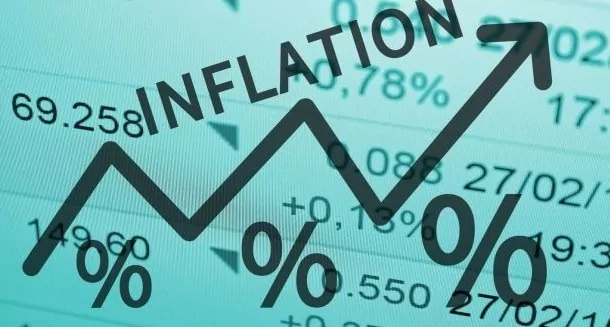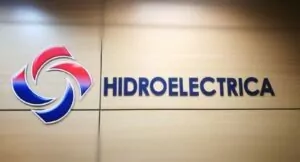2022 should be the year of structural reforms, but it will rather be the year of contrasts, with a deepening of imbalances in the economy, is the conclusion of an analysis by the consultancy Frames.
Urmărește mai jos producțiile video ale Economedia:
- articolul continuă mai jos -
“The outlook for the new year points to a widening gap between prices and wages – which will lead to a fall in living standards, a widening gap between public and private, between promises and reality, between rich and poor. We will have economic sectors on the plus side but also many areas where inflation, the financial bottleneck and the labor crisis will continue to take their toll,” according to the source quoted.
While 2021 was supposed to be the year of structural reforms in the administration, in state-owned companies, in the budgetary environment in general, but also in the pension sector, health, education, etc., “for various reasons, the timetable for reforms has been postponed, the solution being to include most of them in the NRDP, as an essential condition for obtaining European money.”
Below are the main conclusions of the Frames analysis:
The only “reform” that had an impact was the complete liberalization of the energy market (gas and electricity), which unfortunately led to a significant worsening of the problems in the economy.
The liberalization of the markets has been done blindfolded, without taking into account any of the warnings issued internationally and locally, including by Frames, about the possible increase in energy prices. The timing of liberalization could have been postponed for another year or could have been better prepared, with stricter rules and mechanisms to temper the inflationary momentum, given how vulnerable the economy is, especially in the context of the pandemic and how fragile the standard of living is.
Rising energy prices have sent shockwaves through the economy and we will feel the inflationary impact even more strongly in 2022. According to Frames’ estimates, the wave of price rises will hit both businesses and the general public hardest since the second quarter.
“The compensation offered by the Romanian state is like algocalmin offered to a patient in intensive care. It takes away the pain, but it doesn’t solve the problem. With the lifting of the facilities, in Q2 2022, we expect an inflationary wave even stronger than in 2021. Without concrete measures on the production and distribution chains, the state will be doomed in March to extend protection mechanisms (caps/compensation etc.) until energy prices return to a predictable trajectory. In other words, we will take from investment, from health, from other sectors to cover the strong economic effects of the energy price hike”, says Adrian Negrescu, Frames manager.
According to the Frames analysis, even under these conditions, real inflation generated by electricity and gas price increases is likely to exceed 10%. This is because, even if the bills of the vulnerable population will be compensated, the costs will be felt in other goods and services.
“There is no doubt that Romanians will pay more for food and other goods and services in 2022. The anticipated rise in the euro exchange rate above 5 lei and the possible increase in fuel prices will, unfortunately, add fuel to the inflation fire. So living standards will continue to depreciate in 2022,” the analysis says.
Pandemic inhibits the economy
Beyond rising inflation, the COVID pandemic will continue to hurt the economy in 2022. According to analysts’ estimates, it is not excluded that wave 5 will lead the authorities to impose new restrictions, which will mainly affect consumption, the main driver of the economy, but also investment appetite.
Uncertainty over the pandemic’s evolution, coupled with the unpredictable effects of inflation, will continue to drive business decisions, with much investment planning likely to be postponed.
Fears of a significant drop in consumption, especially in the first few months of the year, will cause business people to take a hesitant view of business dealings, with mistrust, unfortunately, the order of the day in the economy.
“Distrust is being felt in the way business is conducted more and more. Supplier credit has become more and more restricted, payments are getting harder to make. People are looking more and more reluctantly at their suppliers, their partners, for fear that they might get into a bind, that they might get into trouble. The result is that deliveries of goods and services are made only with increasingly large down payments and the financial bottleneck is getting worse,” analysts say.
The lack of predictability of government decisions associated with the pandemic, hesitations over the implementation of the green certificate, all add to this phenomenon of distrust in the economy.
“The good news, in this unstable situation, is that most Romanian companies have learned the lesson of the pandemic, have restructured their businesses and are facing 2022 with plans that are better calibrated to economic reality,” says Adrian Negrescu.
Labour crisis inhibits investment
2021 has brought a deepening of the labor crisis, as evidenced by the huge number of jobs for which companies have not found employees.
The lack of workers has cut off the growth potential of many businesses, especially in dynamic sectors in the context of the pandemic such as construction, IT, medical clinics, transport, and courier services, a phenomenon that will continue in 2022.
According to Frames analysts, the main challenges for business in this context will be to recruit skilled employees and offer competitive salaries.
“As most Romanian firms are poorly capitalized, increasing wages will be a challenge that many will not be able to meet. And so, with the increase in the minimum wage on 1 January, many companies have been faced with the problem of optimizing costs, which will, unfortunately, result in staff layoffs. Beyond this, the big problem is that it has become a real mission impossible to find good, experienced employees on the labor market,” the analysis says.
This is also because there are too few Romanian employees willing to specialize in a job in demand.
“There are few training courses, especially free ones, and companies have difficulty finding potential candidates for their own training programs. And when they do find them, it’s hard to keep them, because the legislation doesn’t favor them and employees leave. So they end up turning to more and more foreign employees, a phenomenon that will become more pronounced in 2022,” the analysts predict.
Year of contrasts
Inflation, the pandemic, and the labor crisis are sure to define the economic year 2022. Will it be the year of reforms, of the implementation of the NPRR?
According to Frames analysts, the outlook is unfortunately not so positive. At the end of 2021, the authorities had failed to meet even half of the targets assumed in the PNRR for Q4 2021.
The political crisis, the slow mode of action of the state institutions involved in the PNRR, the lack of very clear mechanisms to penalize those guilty of delaying projects mean that the prospects for effective implementation of the PNRR in 2022 are still in doubt.
According to a recent barometer conducted by Frames on behalf of Sierra Quadrant, the vast majority of businesspeople surveyed estimated that the level of implementation of the PNRR would not exceed 30%.
“Expectations are high, but the gap between promises and reality, between plans on paper and their implementation, creates this feeling of reluctance. Hopefully, the authorities will close this gap and the 500 targets set in the NRRP will be met in time to receive the €30bn that represents a huge boost for the economy,” the analysis says.
Under these circumstances, beyond optimistic expectations, 2022 could best be defined as the year of contrasts.
“If you only look at the assumptions on which the budget was built, you realize that the outlook is volatile to say the least. This collection of good intentions, as the state plan for 2022 can be defined, is based on the idea of 4.6% economic growth, which is unlikely in the current context, inflation down on 2021, a deficit of 5.84%, and a euro rate of 4.98 lei. The way the outlook looks at the moment, we are expecting more budget rectifications because, unfortunately, the economic engine is showing signs of slowing down, and rising inflation combined with a possible freezing of the economy could generate stagflation, an extremely damaging scenario”, the analysis shows.
Beyond the widening gap between prices and wages, the year of contrasts will be felt in the different developments of economic branches. We’ll have plus industries, such as IT, everything from courier services to healthcare, e-commerce, and construction, and many minus sectors, such as manufacturing and exports.
The good news is that, after two years of turmoil, supply chains could return to normal, and crises such as the semiconductor crisis or international transport costs, especially from China, will be overcome, most likely in the second half of the year.
The year of contrasts will unfortunately also bring a sharpening of perceptions about public vs. private, especially in the context of labor shortages.
“The budgetary environment has been largely spared the economic effects of the pandemic over the past two years. Wages have been frozen at a higher level than in the private sector and will return to growth from 2022. In addition, bonuses, holiday vouchers, etc. will be granted again. For the vast majority of those working in the private sector, the idea of a pay rise in 2022 remains, unfortunately, only at an aspirational level even though inflation has strongly eroded their earnings”, says Adrian Negrescu.
Overall, the outlook for 2022 points to a deepening of social polarisation. The gap between rich and poor will widen, and the middle class will continue to be a topic of debate.
“Let’s not forget that we have only 560,000 Romanians earning over €1,000/month and only 50,000 with salaries above €3,000. Restricting access to credit and making bank financing more expensive will, unfortunately, further cut Romanians’ appetite for investment, which will influence economic developments,” the analysis adds.
With inflation on the rise, credit more expensive and harder to get, and the pandemic continuing with wave 5, the outlook for 2022 is far from positive.
If most managers have taken them into account when building their budgets for next year, it remains for the state to face reality and build its governance on real foundations, with measures to stimulate the business environment and avoid making it the workhorse once again.
“Measures to curb inflation are absolutely essential in the coming months, along with measures to reduce tax evasion and optimize public spending. We hope that 2022 will not be the year of tax hikes, where the challenges of the crisis will be solved by administrative decisions designed to bring more money to the budget. The consequences would be disastrous for the business environment,” says the analysis by the Frames consultancy.































